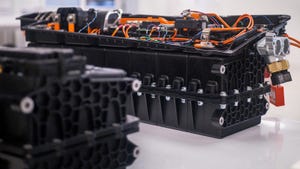Plastics supplier Teijin Ltd. has begun commercial sales of film and sheet extrusion grades of its Biofront brand of bioplastic. Teijin's material has a melting point of at least 210°C, significantly higher than that of conventional bioplastics.
October 21, 2011
The Biofront material already has been offered in injection molding grades and sees use in, for example, eyeglass frames. Biofront differs from conventional polylactic acid (PLA), which is comprised solely of poly-L-lactic acid polymer, in that it is a stereocomplex PLA that also contains the poly-D-lactic acid enantiomer. This results in a melting point that is more than 40°C higher than standard PLA, putting Biofront's heat resistance on a par with petroleum-derived polybutylene terephthalate (PBT).
As we reported last year, Teijin aims to make about 5000 tons of the Biofront material in its fiscal 2011 and eventually reach supply capacity of several tens of thousands of tons. Here is some additional information on Teijin's Biofront PLA material, which in addition to its higher melting point offers at least 10 times more hydrolytic resistance than conventional bioplastics. Teijin (Tokyo, Japan) says the material also is highly resistant to bleaching and bacteria, has good hydrolytic stability and achieves semi-crystallization in just 20-25% of the time required by conventional PLA
According to Teijin, the film and sheet grades of Biofront can be used for a wide range of applications, including packaging and printing substrate requiring high transmission and strength; optical film requiring high transmission, low heat-shrinkage and optical isotropy (uniform properties in all directions); white reflective film and printing substrate requiring strong light scattering; transparent substrate, decorative film, insert molding and blister packaging requiring high transparency and non-crystalline properties.
Teijin developed Biofront film and sheet grades with support from the Innovation Promotion Program of Japan's New Energy and Industrial Technology Development Organization (NEDO).
About the Author(s)
You May Also Like


